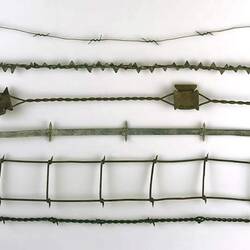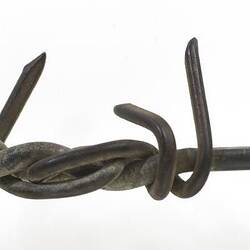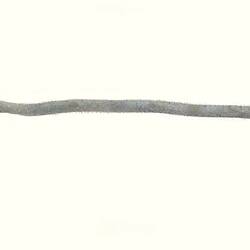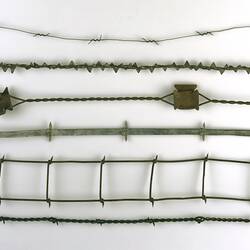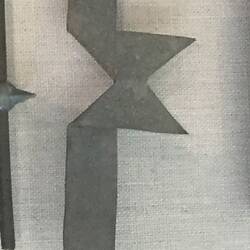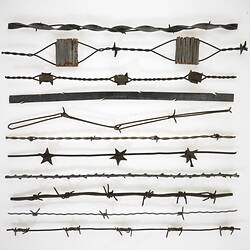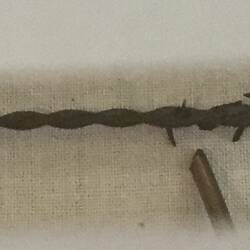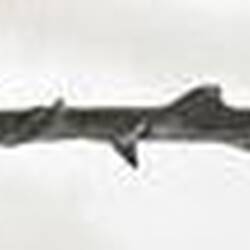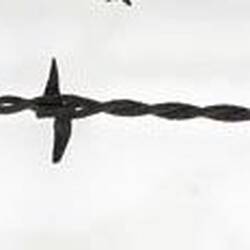Jack's collection was one of only five large private collections in Australia in 2001 and believed to be the largest of its kind in Australia. His collection ranked with the world's best and he contributed to museum displays around Australia. He also gave a selection of wires to The Devil's Rope Museum in Texas. His collection had also been sourced and used by artists.
Some of the highlights of the collection include:
. Samples of the first fencing wire patented in the U.S., William Meriwether's spiral wrought-iron wire (1853), Michael Kelly loose barb wire (1868) and Joseph F. Glidden's single-strand twisted-barb patent (1876).
. Samples of Australian-designed & made barbed wires, including J.C. Perry's welded-pin single-strand barbed wire (1897), H.A. Abbott, single-strand 4-point military entanglement wire (1939) & the Australian 4-point spiral barbed wire.
. Samples of early wire netting including: Heavy-gauge hexagonal pattern netting imported by Horatio Spencer Wills for 'Lexington' Station, near Ararat in early 1850s (50 miles was ordered at a cost ½-crown per yard, total cost £11,000); hand-made ringlock wire netting from 10 mile fence made by Chinese labourers on Wallangra Station, N.S.W., c.1900; a section from the 205 mile (330 km) dingo-proof fence built for the Victorian Government from Tyntynder Station on Murray River, near Swan Hill, to the S.A border in 1885; and 'Rabbit-proof' brand wire netting made in Sydney, early 1900s.
. 'The Cyclone Weaver', a portable machine for making patent woven-wire netting in the field, licensed by The Cyclone Woven Wire Fence Co., Franklin St., Melbourne, c.1900.
. A large selection of Australian made & patented wire strainers, from well-known and commercially successful brands like the Trewhella Bros. Monkey Strainer (1914); Dark & Co. Melb. (1885); W. Craven's patent, Melbourne (1904); H, Grifftihs, Wyuna, Vic (1924); 'The Wallaby' & 'Titan' strainers, to many rare and unusual examples invented by local blacksmiths and farmers.
. A First World War entanglement wire laying trolley.
. A First World War Enfield .303 military rifle with wire cutter attached.
. Ornamental crimpled wire fence droppers & patterned domestic fencing wire.
. Examples of early veterinary ointments & medicines for treating barbed wire injuries in stock, including 'Row's Embrocation or Farmer's Friend', 'Flint's Medicated Oil Treatment for cuts, wounds and galls on horses and cattle' and Rawleighs 'Veterinary Application Useful for barb wire, sprains, bruises ...'
. One special wire has a metal tag that reads 'Made in occupied Japan' which was collected by a serviceman in Japan. To Jack's knowledge this is a very rare wire and he knew of no other example in America or Japan.
. A barbed-wire hat!
More Information
-
Keywords
-
Authors
-
Article types

